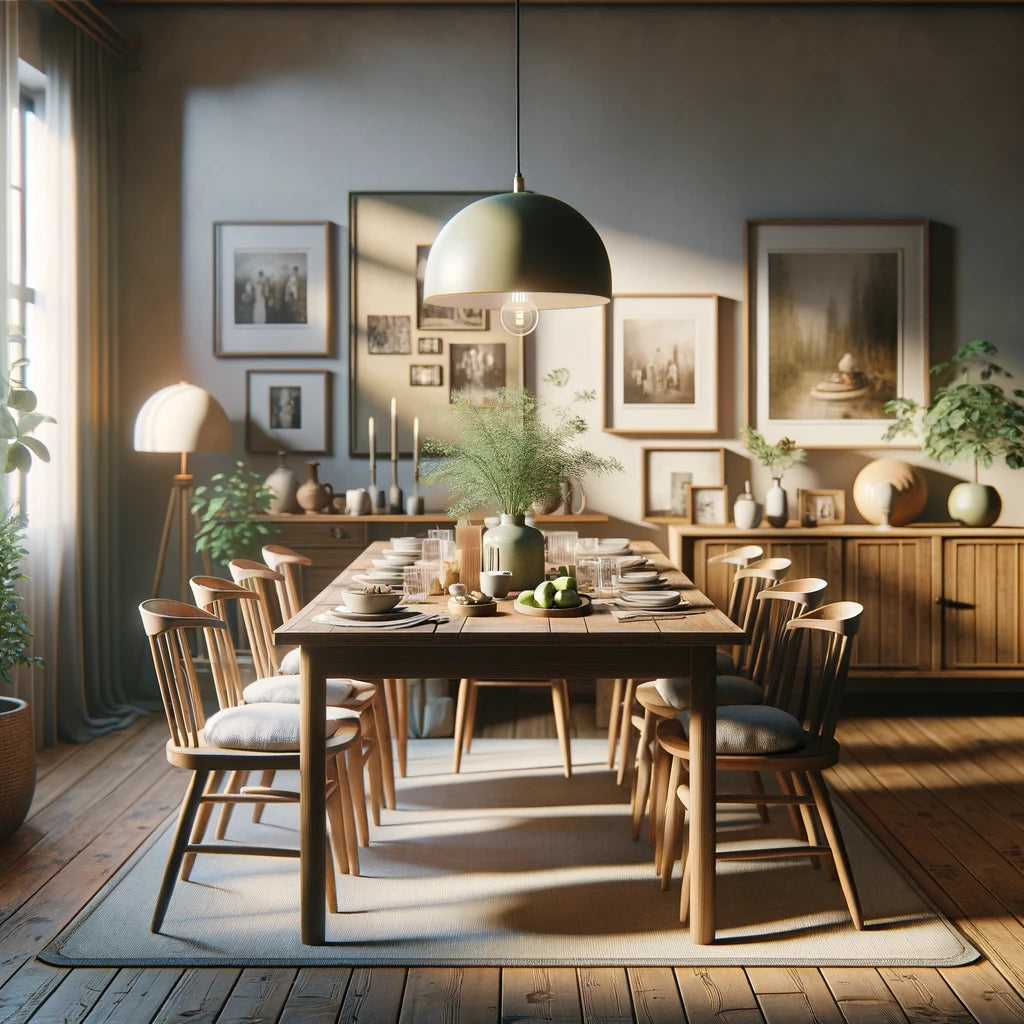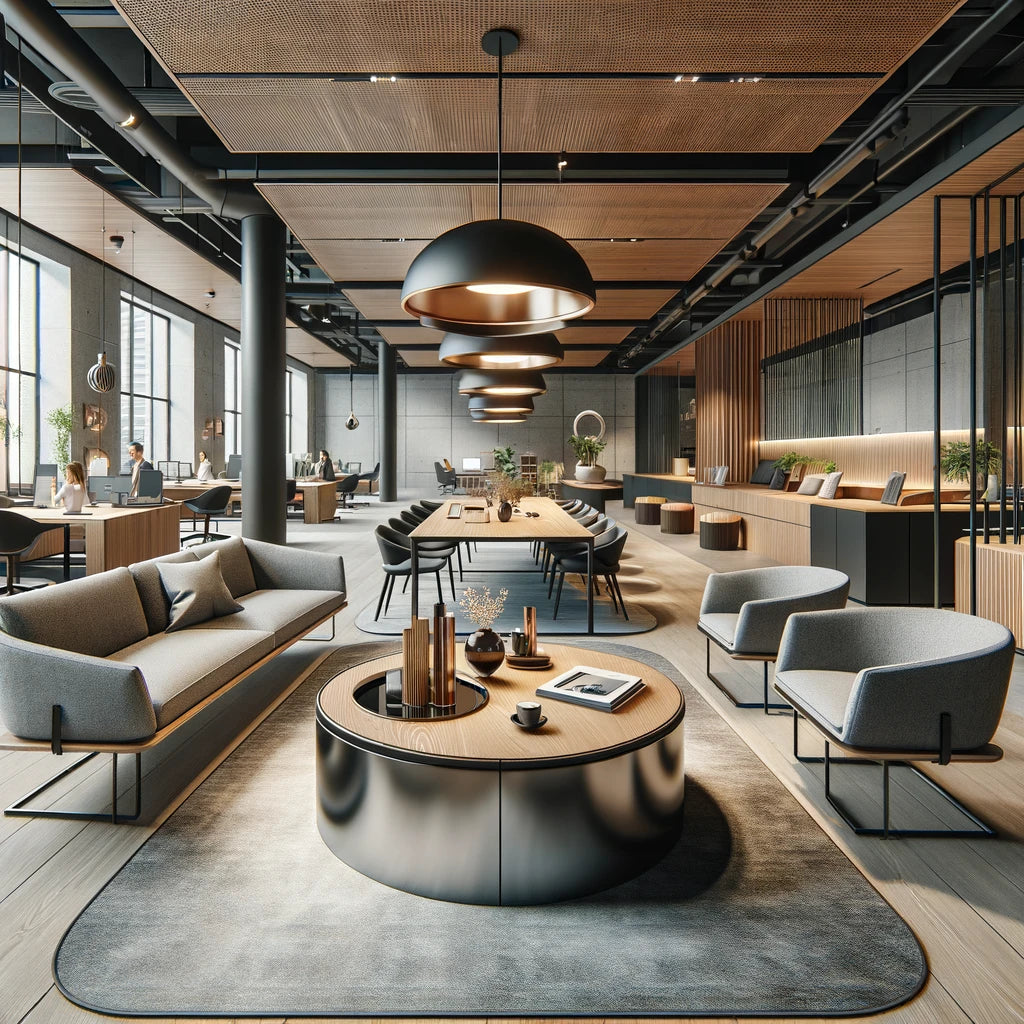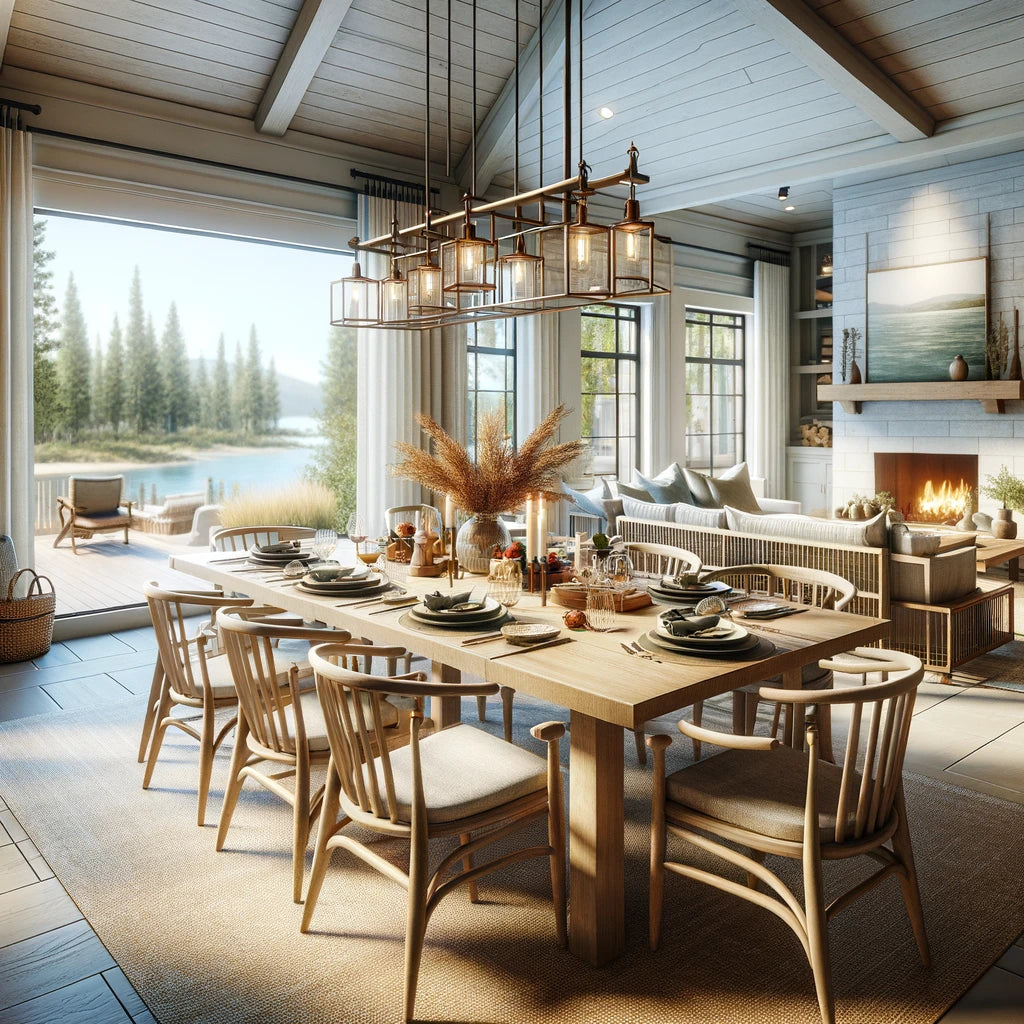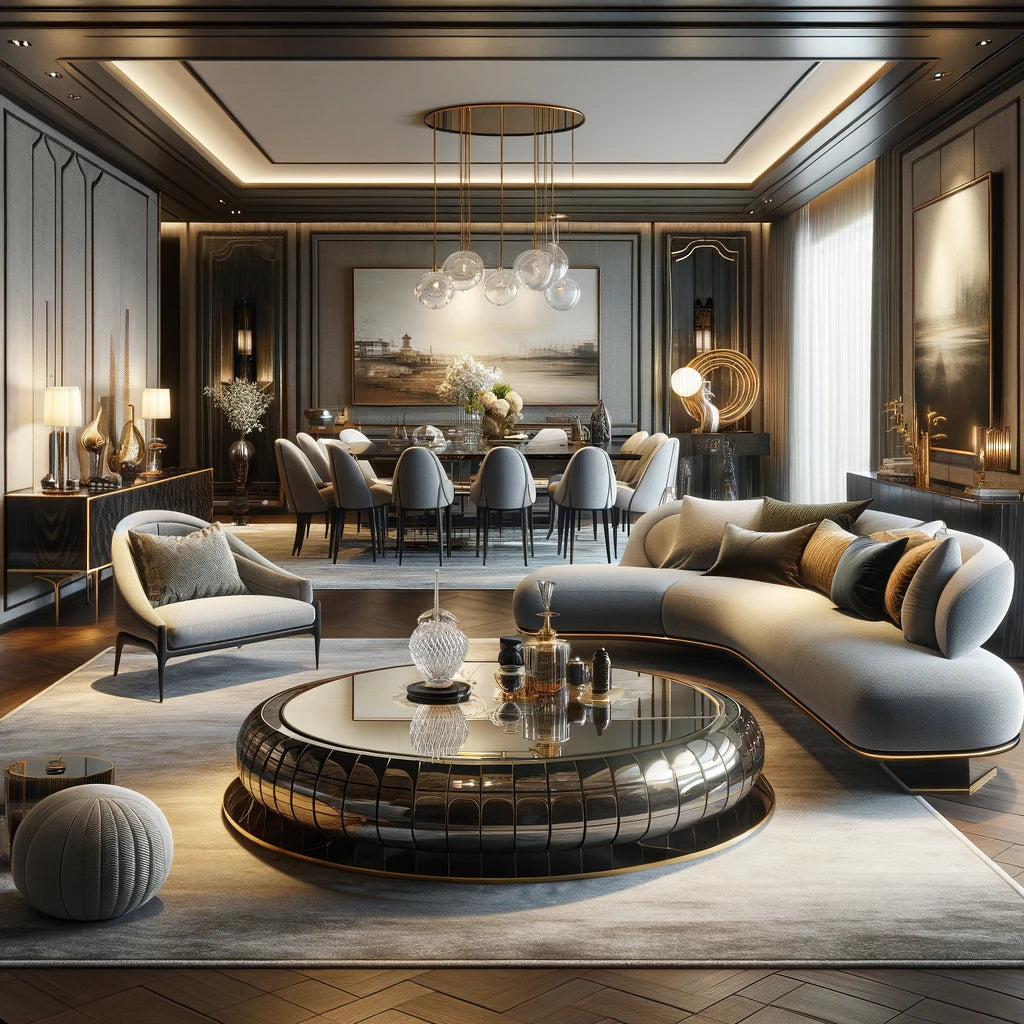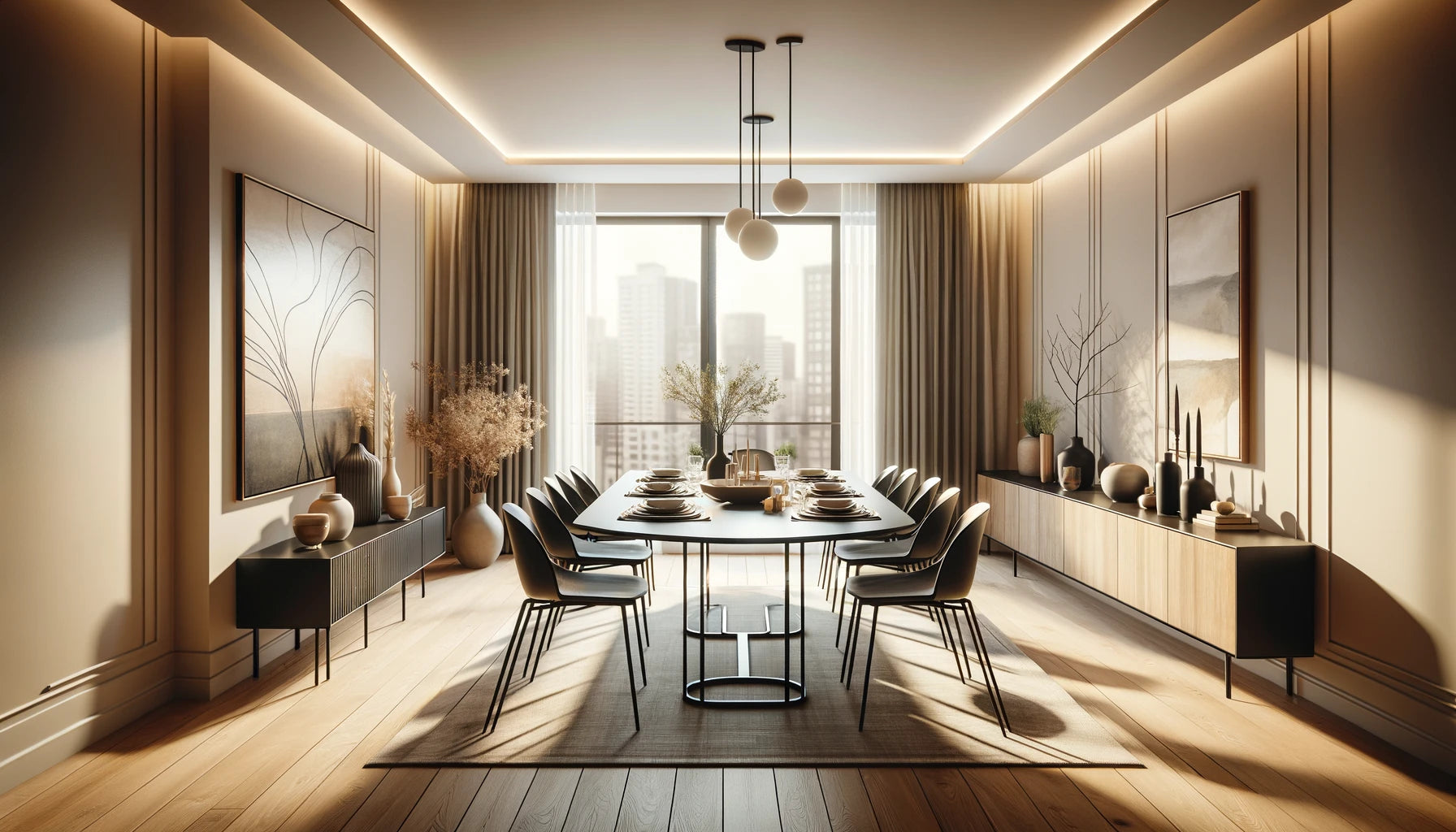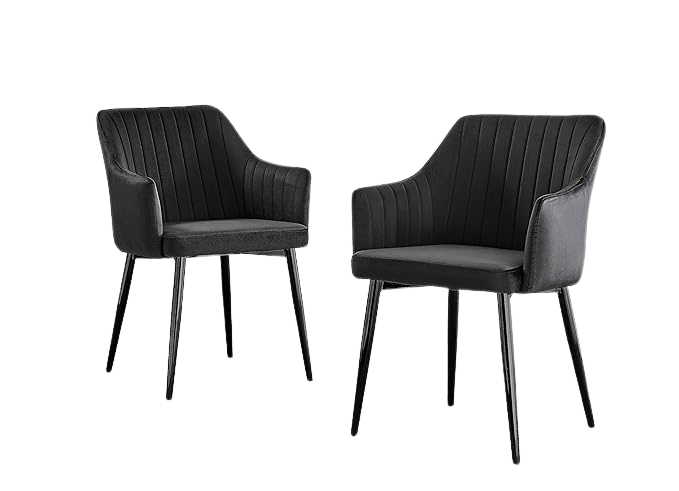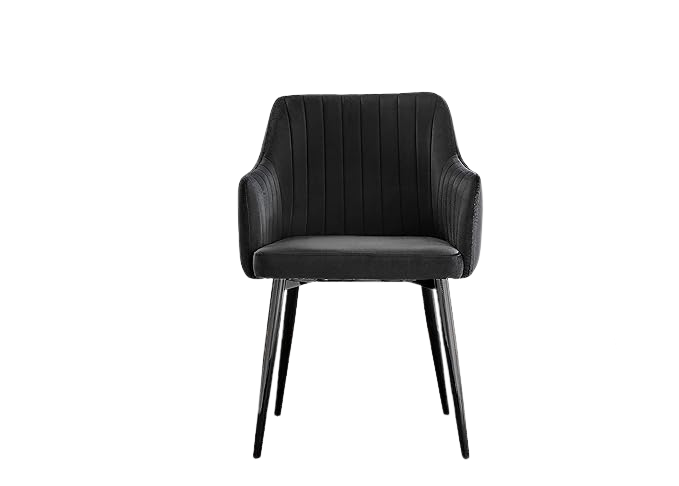In the bustling rhythm of modern life, the design of our spaces profoundly influences our emotional well-being and psychological health. This blog explores the intersection of psychology and spatial design, emphasising how strategic design choices in our living and working environments can significantly impact our emotions, behaviours, and overall mental health.

Understanding Emotional Resonance in Design
Design is not just about aesthetics; it's about creating an environment that resonates emotionally with its inhabitants. From the colour of the walls to the arrangement of furniture, every detail can influence our mood and psychological state. By understanding the psychological effects of different design elements, we can create spaces that inspire, comfort, and energise us.
This deeper understanding of design's emotional impact goes beyond conventional decorating. It's an exploration into how spatial elements like volume, proportion, and layout can significantly alter human emotions and behaviours. Thoughtful design considers the psychological needs of its users - whether it's fostering concentration in a study, facilitating rest in a bedroom, or encouraging social interaction in a living area. Designers who pay attention to these subtle cues can transform ordinary spaces into nurturing environments that reflect and adapt to our changing emotional needs.
Moreover, the integration of nature and technology in design also plays a crucial role in emotional well-being. Biophilic design, which incorporates natural elements like plants, water, and natural light, has been shown to reduce stress and improve mood and cognitive function. On the other hand, technological advancements allow for customizable environments - from lighting that adjusts to our circadian rhythms to smart furniture that responds to our physical needs, further enhancing the emotional comfort of a space.
Finally, the role of personalization in design cannot be overstated. Spaces that allow for individual expression and reflect personal histories and future aspirations can deeply resonate on an emotional level. The incorporation of personal items, art, and memorabilia can turn generic spaces into unique reflections of the individual, creating a profound sense of belonging and identity. In this way, design becomes a tool not just for aesthetic enhancement, but for emotional connection and personal storytelling.

Colour Psychology in Interior Design
Colours are powerful tools in affecting human emotion. Warm colours, such as reds, oranges, and yellows, can evoke feelings of warmth and comfort, invigorating the space and its occupants. These colours are often used in areas where energy and interaction are desired, like living rooms and dining areas. On the other hand, cool colours like blues, greens, and purples tend to create a sense of calm and serenity. These hues are ideal for spaces designed for relaxation and introspection, such as bedrooms and bathrooms.
The influence of colour extends beyond just wall paint; it encompasses all elements of a room's décor, from furniture and textiles to artwork and lighting. For example, a bright yellow sofa can add a burst of energy and optimism to a living room, while a deep blue rug in a bedroom can contribute to a peaceful and restful ambiance. The way colours interact with each other also plays a critical role in interior design. Contrasting colours can create a vibrant and dynamic environment, while a monochromatic scheme can produce a more cohesive and tranquil space.
Additionally, the saturation and brightness of colours can significantly impact their psychological effects. Bright, saturated colours are stimulating and can create a sense of excitement, whereas muted colours are soothing and provide a sense of stability and groundedness. This aspect of colour psychology is particularly important in spaces that serve multiple purposes, such as a home office that needs to balance productivity and calmness.
Lastly, the cultural and personal associations with certain colours should not be overlooked in interior design. Different cultures may have varying interpretations and emotional connections with specific colours, which can influence how a space is perceived. Personal experiences and preferences also play a significant role; a colour that is calming for one person might evoke entirely different emotions in another. Therefore, understanding the intended audience or user of a space is crucial in selecting an appropriate colour palette that resonates on a deeper, emotional level.

The Role of Texture and Materials
Textures and materials are fundamental in shaping the emotional ambiance of a space. Soft fabrics, like plush velvets or smooth silks, can add a layer of luxury and comfort, making a room feel more welcoming and intimate. Natural materials like wood, stone, and bamboo, on the other hand, can bring an element of the outdoors inside, promoting a sense of calm and grounding. These materials connect us to nature, known for its therapeutic properties, and can transform a sterile space into a warm, inviting one.
Conversely, the use of sleek, modern materials such as polished metal, glass, or concrete can convey a sense of sophistication and modernity. In a work environment, these materials can promote a feeling of efficiency and focus, while in a home, they can add a contemporary, minimalist aesthetic. The key lies in balancing these textures to create a harmonious environment that caters to the needs and preferences of its occupants.
The tactile experience of a space is also essential in emotional design. The feel of a surface underhand - whether it's the smooth coolness of marble or the rough texture of a natural fibber rug - can significantly affect our mood and perception of a space. It's not just about how a space looks, but how it feels to the touch.
Lastly, the combination and contrast of different materials and textures can add depth and interest to a room. A rough, exposed brick wall paired with soft, flowing curtains, for instance, can create a visually appealing contrast that stimulates the senses and adds character to a space. The thoughtful selection and combination of textures and materials can transform a room from merely functional to emotionally resonant.

Lighting: The Subtle Influencer of Mood
Lighting plays a pivotal role in shaping the mood and atmosphere of a space. The brightness, colour temperature, and even the direction of light can dramatically alter our perception of a room. Bright, cool-toned lighting is energising, ideal for workspaces and kitchens, where focus and alertness are key. In contrast, warm, dim lighting can create a cosy, relaxed environment, suitable for bedrooms and living areas where relaxation is the goal.
The source of lighting is equally important. Natural light, with its ever-changing qualities throughout the day, can bring a space to life, enhancing its features and influencing our circadian rhythms. On the other hand, artificial lighting, when used creatively, can highlight architectural features, artwork, or create focal points in a room.
The emotional impact of lighting is also seen in its ability to create illusions of space. Well-placed lighting can make a small room feel more open and airy, while a dimly lit large room can feel more intimate and cosy. This manipulation of perception is a powerful tool in the hands of a skilled designer.
Finally, the interplay of light and shadow can add drama and mood to a space. Subtle backlighting, shadow play from natural elements like plants, or the use of directional lighting to create contrast, can all contribute to the emotional narrative of a space. Lighting, when used effectively, is not just functional but an art form that can evoke feelings and set the tone for experiences within a space.

Creating Spaces for Emotional Wellness
Designing for emotional wellness involves creating spaces that not only meet physical needs but also nurture the mind and soul. This involves understanding the psychological effects of various design elements and applying them to create environments that support mental health. For example, incorporating areas for relaxation, meditation, or social interaction can significantly improve the quality of life for the inhabitants.
In addition to providing comfort and tranquillity, emotionally supportive design also encourages positive interactions and fosters a sense of community. Spaces that promote social engagement, whether through communal seating arrangements, open-plan layouts, or interactive elements, can help build relationships and a sense of belonging.
The adaptability of spaces also plays a crucial role in emotional wellness. Designing environments that can be easily modified to suit different activities and moods allows individuals to have control over their surroundings. This flexibility can make spaces more resilient to changing needs, ensuring long-term comfort and satisfaction.
Finally, integrating elements of personalization and identity in design can greatly enhance emotional wellness. Spaces that reflect the unique personalities, histories, and values of their occupants can foster a deeper sense of connection and ownership. Personal artefacts, custom designs, and individualised layouts all contribute to creating a space that truly feels like a reflection of its user's inner world.

Concluding Thoughts
The exploration into the psychology of space, as discussed in this blog, underscores the profound impact of design on our emotional and psychological well-being. From the hues that colour our walls to the very light that illuminates our rooms, every element of design holds the potential to affect our mood, behaviour, and overall mental health. By harnessing the principles of emotional design, we have the power to transform our living and working environments into spaces that do more than just serve functional purposes; they become catalysts for well-being, creativity, and emotional harmony.
As we delve deeper into the nuances of colour psychology, texture, materials, and lighting, we uncover the subtle yet significant ways in which our surroundings can either enhance or diminish our quality of life. The thoughtful integration of these elements not only creates aesthetically pleasing spaces but also cultivates environments that nurture the mind and soul. This holistic approach to design invites us to reconsider our spaces as active participants in our daily lives, influencing and being influenced by our emotional states and life experiences.
Moreover, the role of personalization in design emerges as a key factor in crafting spaces that resonate on a deeper level. By creating environments that reflect individual identities and stories, design transcends its traditional boundaries, becoming a medium for personal expression and emotional connection. This personalised approach fosters a sense of belonging, turning spaces into sanctuaries where individuals can retreat, rejuvenate, and reconnect with themselves.
In conclusion, the psychology of space is a testament to the interplay between our environment and our inner world. As we continue to navigate the complexities of modern life, the importance of designing spaces that support our emotional and psychological health becomes ever more evident. By embracing the principles of emotional design, we open the door to creating more nurturing, inspiring, and holistic spaces that not only meet our physical needs but also cater to our emotional and spiritual well-being.



